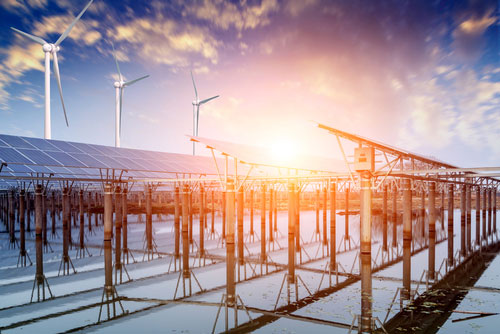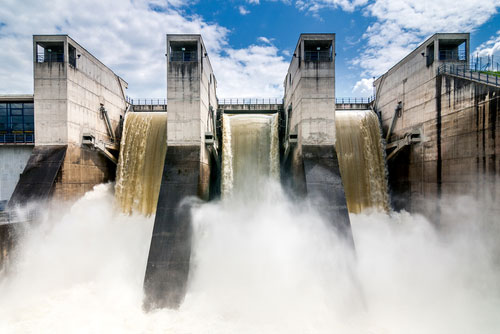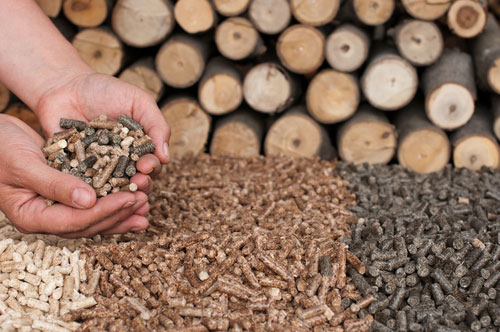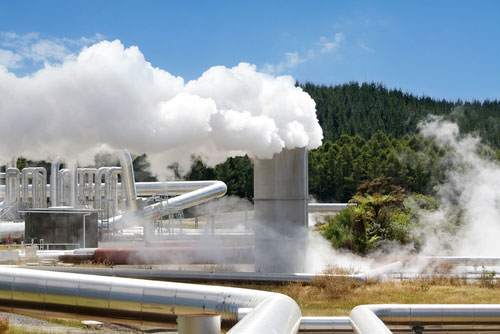Hãy nhập câu hỏi của bạn vào đây, nếu là tài khoản VIP, bạn sẽ được ưu tiên trả lời.

"Năng lượng không tái tạo" và "năng lượng tái tạo" nghĩa là gì? Đưa ra vài ví dụ

We can save energy by doing some following tips. First of all, we should use electricity more efficiently and reduce our electricity bill. We need to turn off the TV when we are not watching, turn off all the lights before going to bed. Besides, we should not leave the fridge door open in a long time due to wasting of electricity. Moreover, we should save water by taking showers instead of baths or turning off the water when you don not use it. The next tip is reducing the use of fossil fuels like gas, coal, and oil. It is not only saving energy but also protect our environment. To do this, we can use public transport and avoid using car or motorbike for short trip. All in all, because our energy is limited we need to reserve it for the future generations.

Renewable energies (or renewables) are ways to generate energy from (theoreally) unlimited natural resources. These resources are either available with no time limit or replenish more quickly than the rate at which they are consumed.
Renewable energies are generally spoken of as opposed to fossil fuel energies. The fossil fuels’ stocks are limited and non-renewable in the human timescale. The most known examples of these resources are coal, oil or natural gas. On the contrary, renewable energies are produced from renewable sources. Here, we’re talking about energy coming from solar rays, wind or water cycles – all theoreally unlimited on a human scale time.
Renewable energies are also often referred to as “green energies” or “clean energies”. Still, this doesn’t mean that these energies aren’t harmful to the environment and have zero impact. Nonetheless, they have a low environmental impact compared to fossil fuels. That’s why they’re increasingly becoming important elements in companies’ CSR strategies in terms of sustainable development.
There are several types of renewable energies that are produced by different sources such as the sun, wind or water. In fact, these renewables’ power consumption has been growing over the last year. They have provided 8% of the world’s electricity in 2017 and they now cover 1/3 of the power mix in Europe. At the same time, the energy grid gets 1/4 of the total energy in China and 1/6 in the United States, India, and Japan. Let’s learn more about them below.
- Related content:
- Is Solar Energy Really Green And Sustainable?
1 – Solar Energy

This type of renewable energy comes directly from the capture of solar radiation. Here, the solar radiation is absorbed by specific sensors and rebroadcasted following 2 possible operation modes:
- Capturing sun rays and directly converting them into energy through photovoltaic solar panels;
- Capturing, collecting and turning the sunlight into heat that warms up water or air.
Examples of Solar Energy in the World
It’s estimated that in 2017 1,6% of the worldwide generated energy came from solar sources. At the same time, solar power also contributed to 20% of the total energy growth in this same year. Some of the most known sources of solar energy are:
- The Kurnool Ultra Solar Park in India. It has a total generation capacity of 1000MW and over 4 million solar panels installed;
- The Longyangxia Solar Park in China that has a total capacity of 850MW and covers around 25sq km.
- The Kamuthi Solar Facility in India: it has a total capacity of 648MV and covers 10sq km.
Is Solar Energy Renewable or Nonrenewable?
Solar energy is inexhaustible in the sense that it will cease once the solar system’s star – the sun – dies. However, many people wonder if, from a perspective of human’s being able to capture and use solar energy in the long-term, whether solar energy is renewable or nonrenewable.
[Full answer available soon.]
2 – Windpower, a Renewable Energy
Wind power is another renewable energy. Here, the wind’s kine energy makes turbines spin and creates a mechanical movement. Afterward, a generator transforms this mechanical energy into electricity. There are several types of wind renewable energies: onshore wind turbines, off-shore wind turbines and even floating wind turbines. But the operating principles are basically the same for all these types of wind-generated energy.
Examples of Wind Power in the World
Wind power continues has also been growing, In fact, it provided 4.4% of global power generation in 2017. The highest installed wind capacity belongs to China (164GW). At the same time, in the EU, wind power provides 15% or more of the energy generated in several countries such as Germany, Portugal or Lithuania. Some of the most known sources of wind power energy are:
- The Gansu Wind Farm in China. It is still under construction and it will be able to produce 20,000MV of power by 2020;
- The onshore Muppandal Wind Farm in India with a capacity of 1,500MW and over 3000 turbines;
- The Alta Wind Energy Center in the U.S. with a total capacity of 1,548MW that’s expected to reach 3,000MW by 2040;
- The Walney Extension in the UK. It has a total capacity of 659MW and it’s the world’s largest offshore farm.
3 – Hydro-Electric Power

Hydro-electric power consists in the transformation of the kine energy of the water (from rivers, dams, marine currents or tides) into mechanical energy by turbines.
- Related content:
- Marine energies: what is it?
- 5 promising marine energy projects
- The tidal energy: an example of the tidal turbine DCNS
Examples of hydro-electric power in the world
- The Sihwa Lake Tidal Power Station in South Korea. This is the world’s biggest tidal power installation and it has a capacity of 254 MW;
- The Rance Tidal Power Station in Brittany, France, has a 240 MW capacity;
- The Three Gorges Dam in China is the world’s largest power station in terms of installed capacity (22,500 MW).
4- Biomass

Biomass is made up of organic materials from plants or animals that contain stored energy. The combustion of these natural materials produces renewable energy. Some examples of generating energy from biomass are:
- Directly burning solid biomass garbage or wood to produce heat;
- Converting biomass into biogases such as methane or CO2 due to the bacterial activity that happens in the absence of oxygen (as is the case in landfills);
- Using sugar or corn crops to create biofuels such as bioethanol or biodiesel and mixing them with fossil fuels afterward. As a matter of fact, the world’s biofuels production increased by 3.5% in 2017.
Related content:
- Palm oil has a huge environmental impact. What’s the impact of its use as a biofuel?
- What Is Biogas Energy Production?
Examples of Biomass Energy in the World
Some of the most known biomass power plants in the world are:
- The Iron Bridge power station in the UK, with a capacity of 740MW. It uses wood pellets as the main fuel;
- The Alholmenskaft power station in Finland. It has a 260MW energy generation capacity;
- The Polaniec power plant in Poland that uses mainly agricultural by-products and wood residues. It has a 205MW capacity.
5- Geothermal Power as a Renewable Energy

The Earth generates and stores geothermal energy. In other words, radioactive materials decaying inside the Earth are emitting energy. Electricity can be created using directly or indirectly this energy, depending on the technology implemented. There are 3 main ways to use geothermal energy:
- Generating electricity directly from the Earth’s heat;
- Producing heat directly from hot water boiling on the planet’s surface;
- Using pumps over the shallow ground to heat (and also to cool)

1. Tet is the best festival to me
2. That celebrates the arrival of spring in Vietnam every year
3. There are many customs of Vietnamese people on Tet holiday. For example, they often visit their relatives, friends and temples. Some people visit the graves of their ancestors in their homeland. Before Tet holiday begins, people decorate and clean their house carefully to have a wonderful time with their family...

- What you should do to save energy
With fast growth of civilization there is also an ever mounting need for energy. Energy may be in the form of fuels or electricity. Petrol is a liquid fuel which is used widely nowadays. But this kind of fuels is likely to be exhausted at the rate man is using it recently.
To meet the challenge, various methods have been suggested. One is to minimize the man’s demand in using the energy. Non-essential consumption should be minimized. During certain days of the year, people all over the world turn off the electricity for 1 hour to save the energy. Modern gadgets consuming energy should only be used when they are absolutely necessary.
Energy conservation is possible through modernization of plant and equipment. People should replace the obsolete equipment by the modern ones.
Energy can be saved on transport by the following methods. People should commute by the rail rather than by cars and vans. The transport must be improved with a view to sparing the energy. Cities must be planned in such a way that the commuting distance from this place to others is minimized.
In industry, many things could be done to reduce waste of energy or to economize energy. The machine maintenance needs to be tightened; heater must be utilized properly. When systems are streamlined, economy in fuel is obvious. Instead of using materials requiring higher energy, those which require lower energy should be used.
We hope man with his ever rising urge for existence will cope up with this urgent problem and find alternatives.

rewable:wind,solar enery,hydro,nuclear,biogas...
non rewable:coal,oil,natural gas...i think people will use it more in the future
Non-renewable energy is energy that cannot be regenerated after use
Renewable energy is energy that can be regenerated after use and replaceable
Example
Non-renewable energy: coal, nuclear, natural gas
renewable energy: solar energy,wind energy,hydro